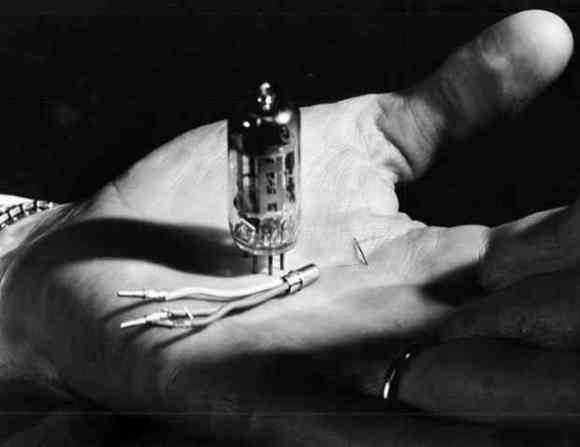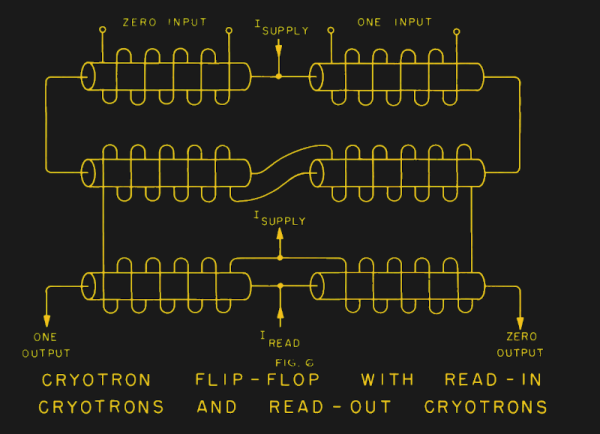
Have you ever heard of a Cryotron Computer before? Of course not. Silicon killed the radio star: this is a story of competing technologies back in the day. The hand above holds the two competitors, the bulkiest one is obviously the vacuum tube, and the three-legged device is what became a household name. But to the right of that tube is another technological marvel that can also be combined into computing machines: the cryotron.
[Dudley Allen Buck] and his contributions to early computing are a tale of the possible alternate universe that could have been cryotrons instead of silicon transistors. Early on we find that the theory points to exotic superconductive materials, but we were delighted to find that in the conception and testing stages [Buck] was hacking. He made his first experimental electronic switches using dissimilar metals and dunking them in liquid helium. The devices were copper wire wrapped around a tantalum wire. The tantalum is the circuit path, the copper wire acts as the switch via a magnetic field that alters the resistance of the tantalum.
The name comes from the low temperature bath necessary to make the switches work properly. Miniaturization was the key as it always is; the example above is a relatively small example of the wire-wound version of the Cryotron, but the end goal was a process very familiar to us today. [Buck] was searching for the thin film fabrication techniques that would let him shoe horn 75,000 or more into one single computing platform. Guess who came knocking on his door during this period of his career? The NSA. The story gets even more interesting from there, but lest we rewrite the article we leave you with this: the technology may beat out silicon in the end. Currently it’s one of the cool kids on the block for those companies racing to the quantum computing finish line.
[Thanks Frederick]
Retrotechtacular is a weekly column featuring hacks, technology, and kitsch from ages of yore. Help keep it fresh by sending in your ideas for future installments.













